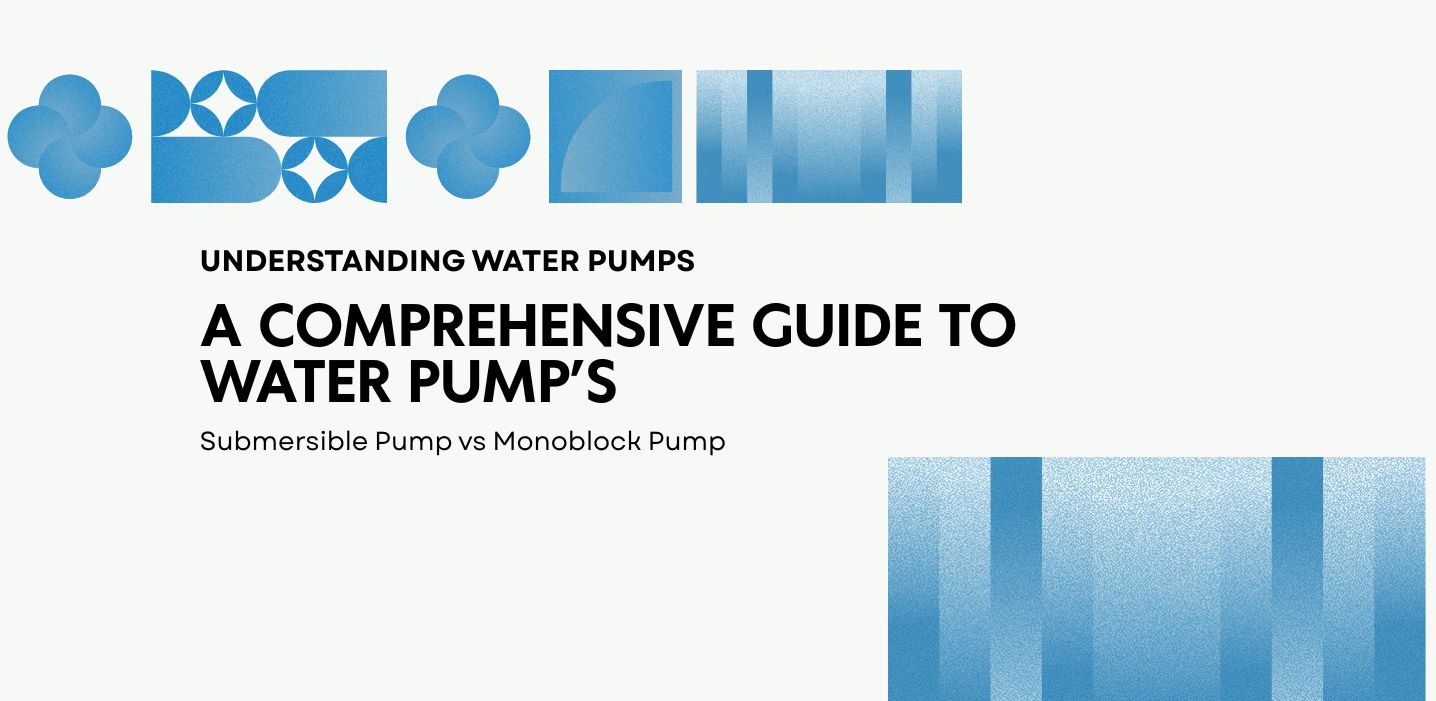A Comprehensive Guide to Water Pumps: Submersible Pump vs. Monoblock Pump
Water is the elixir of life, and its efficient distribution is essential for various domestic, agricultural, and industrial purposes. One of the key players in this process is the water pump, a device that moves water from one location to another. In this blog, we’ll delve into the world of water pumps, focusing specifically on submersible pumps and monoblock pumps, two commonly used types that serve different functions in water management systems.
Understanding Water Pumps
Water pumps are mechanical devices designed to move water from a lower point to a higher point or through pipelines for various applications. They are used in a wide range of scenarios, including irrigation, drainage, domestic water supply, industrial processes, and more. Water pumps are classified into several types based on their design, functionality, and usage. Two common types are submersible pumps and monoblock pumps.
Submersible Pump
A submersible pump is designed to be fully submerged in water during operation. This type of pump is typically placed inside a well, borehole, or water source, and it pushes water to the surface. Submersible pumps have several advantages:
1. Efficiency: Submersible pumps are highly efficient due to their direct placement in the water source, which reduces energy losses in moving water vertically.
2. Space-Saving: Since they are submerged, submersible pumps don’t require additional space on the surface, making them ideal for situations with limited space.
3. Noise Reduction: Being underwater, submersible pumps are quieter compared to surface pumps because the water acts as a natural noise dampener.
4. Low Priming Requirement: Submersible pumps are self-priming, meaning they can start pumping water without needing to be manually primed like some surface pumps.
5. Less Risk of Cavitation: Cavitation is the formation of vapor bubbles due to low pressure, which can damage pumps. Submersible pumps are less prone to cavitation since they’re already submerged.
Monoblock Pump:
A monoblock pump, also known as a centrifugal pump, is an above-ground pump with a motor and impeller enclosed in a single casing. These pumps are usually positioned outside the water source and are connected to it via pipes. Monoblock pumps offer their own set of advantages:
1. Easy Maintenance: Since monoblock pumps are installed above ground, they are more accessible for maintenance and repairs compared to submersible pumps.
2. Wide Application Range: Monoblock pumps are versatile and can be used for a variety of applications, from domestic water supply to industrial use.
3. Initial Cost: Monoblock pumps tend to have a lower initial cost compared to submersible pumps, making them more budget-friendly for smaller setups.
4. Better Cooling: The air around a monoblock pump provides better cooling, which can extend the pump’s lifespan and prevent overheating.
5. Variety of Designs: Monoblock pumps come in various designs and sizes, allowing users to choose the one that best fits their specific needs.
Choosing the Right Pump:
Selecting the appropriate water pump depends on your specific requirements and the intended application. Consider factors such as water source, required flow rate, vertical lift, available space, noise considerations, and budget.
For deep wells or boreholes, where efficiency is crucial and space is limited, a submersible pump might be the best choice. On the other hand, if you’re looking for a versatile pump that can handle various tasks and is easier to access for maintenance, a monoblock pump could be the right fit.
Conclusion:
Water pumps play a vital role in water management, ensuring the efficient movement of water for different purposes. Submersible pumps and monoblock pumps are two widely used types, each with its own set of advantages and suitable applications. Whether you’re aiming for efficient water delivery from deep sources or require a versatile pump for various tasks, understanding the differences between these pump types will help you make an informed decision and ensure a reliable water supply system.

 1800 103 5555
1800 103 5555
